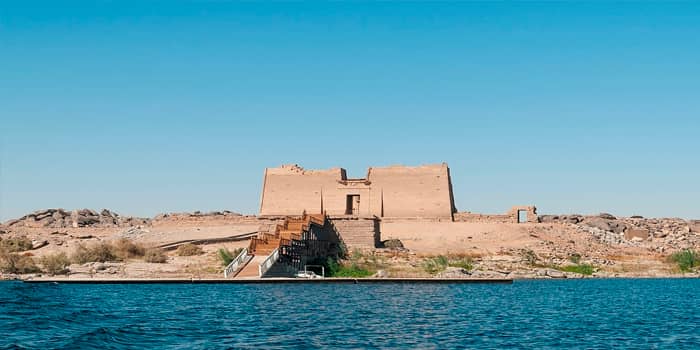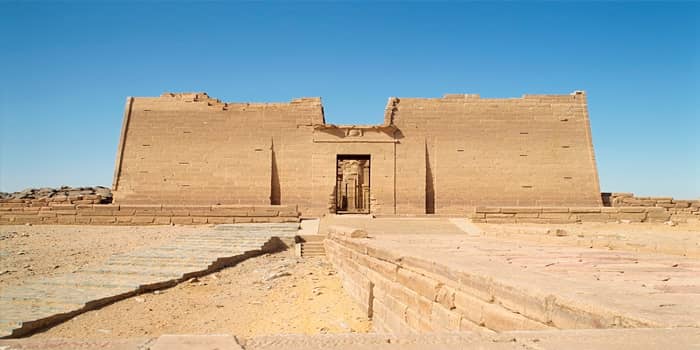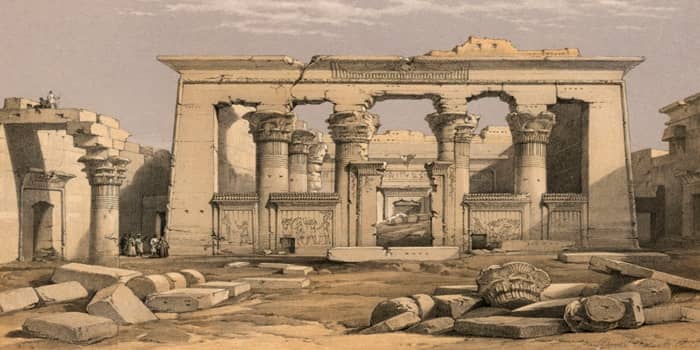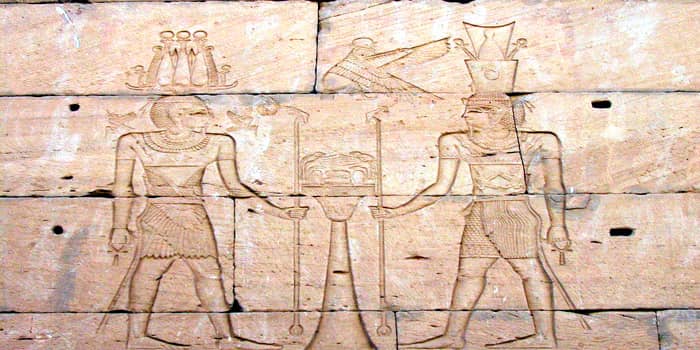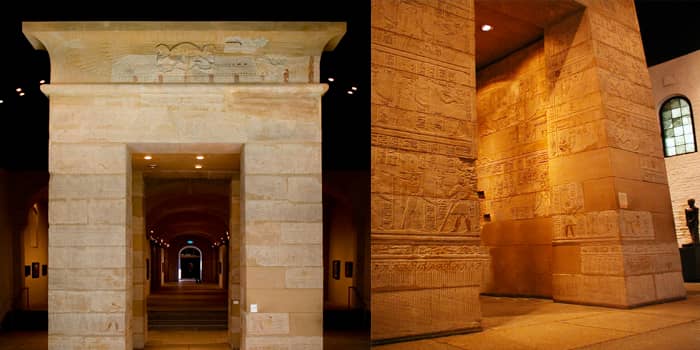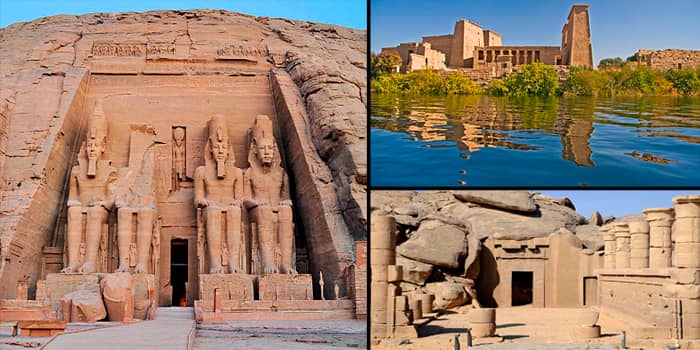When was the temple of Kalabsha built?
Kalabsha temple was built at the end of the Ptolemaic, and then it was completed by the Roman Emperor Augustus in 30 BC . The temple was built over an earlier sanctuary that dates back to the 18th dynasty around 1400 BC. The temple is unique in its combination of Roman and Egyptian themes, you can find on the walls Pharaohs and Roman Emperors worship Egyptian Gods.
Nubian Solar God / The history of kalabsha Temple
The temple was built in dedication to the Nubian Solar God Mandulis as the Greeks called him, but the Nubians named him Merwel. It was believed that the God Mandulis was a version of Horus; he was depicted in a vulture feathered cloak. The Horus Nubian God was carved in the screen walls, and the God of wisdom, Thoth, standing with the King.
Description of Kalabsha Temple
When the Lake Cruise embarks in front of the temple, you'll find an impressive stone causeway leading to the temple's first pylon. After that, you'll find a colonnaded court; beyond it lays the hypostyle hall with its eight columns. The most impressive part of the temple is the stairs that will lead you to the roof with a great view of the lake and the High Dam of Aswan.
Kalabsha Gate
There used to be a gate in front of the temple; Emperor Augustus built it, called Kalabsha Gate. After the temple was moved from its original place to save it from being submerged, Germany helped in the process, so the Egyptian Government gave them the gate as a sign of gratitude. The Kalabsha Gate is now at the Agyptisches Museum in West Berlin.
Rescuing History Of Kalabsha Temple
After building the High dam of Aswan, there was a risk that the water will submerge some temples. A campaign was made with UNESCO's help to save the temples and move them somewhere else. Many temples were moved beside the Temple of Kalabsha; the most famous one is
Abu Simbel Temple. Also, the Philae temple was moved to Agilkya Island, and
Beit El Wali was moved near Kalabsha Temple; you can visit it during the Lake Cruise.

